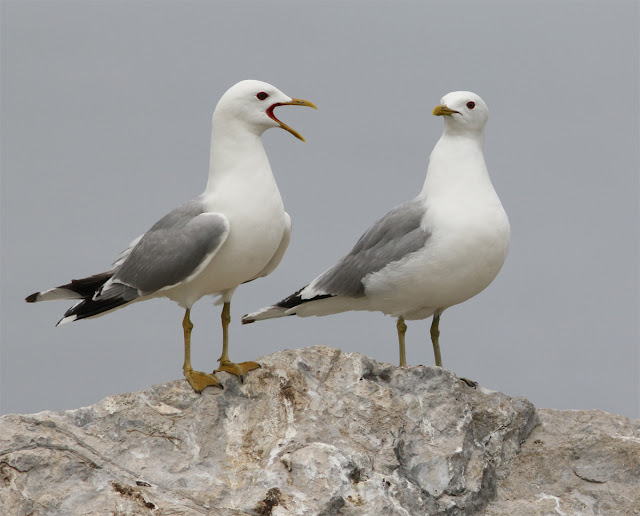What's happened to the terns on the Magharee islands? A visit there on 7th June showed that numbers of nesting terns on several of the islands have plummeted. On Illauntannig in particular, where normally up to 50 or so pairs of Arctic Tern nest, only 7-8 pairs were present.
Tern nesting area (foreground) on Illauntannig, a previous Arctic Tern and Little Tern colony, now with only two pairs of Little Tern.
Arctic Tern, Illaunturlough, 7th June 2016 (all photos: Michael O'Clery).
Arctic Tern, Illauntannig, 7th June 2016.
In recent years Common Terns had increased, from two pairs on Illauntannig in 2003 to a peak of 38 in 2007. In June 2016 only two non-breeding birds were seen.
Common Tern, Illauntannig, 7th June 2016 (all photos: Michael O'Clery).
Perhaps most seriously of all, there were only two, possibly three, pairs of nesting Little Terns on Illauntannig. The lowest previous count at this site - the only breeding site on the entire SW coast of Ireland - was of 18 pairs in 2007. In most summers in the past ten years, 20 to 30 pairs have been the norm.
Little Tern, Illauntannig, 7th June 2016.
By way of something of a caveat, only four of the main islands were checked, and it is possible that the Arctic and Common terns have relocated to other island, e.g., Illaunammil, and the remote Illaunnabarna, both of which have held important numbers in the past. For Little Terns however, the only island with suitable shingle beach nesting habitat is on Illauntannig, so it is most unlikely to be nesting undetected elsewhere on the island group.
There are also natural fluctuations at most tern nesting sites around Ireland and, as not all islands were visited this June, it is hard to draw definitive conclusions about this years apparent decline, but for Illantannig, these are the lowest counts of nesting tern numbers ever.
Rock Dove, Illauntannig, 7th June 2016.
Common Gull numbers are down on Illauntannig too, with only about 30 pairs nesting at one colony on the island, when in previous years up to around 80 at two to three colonies has been the norm. None were nesting this summer on Doonagaun, Illaunboe or Illaunanoon where 3, 11 and 35-40 pairs respectively nested in 2007.
Common Gulls, Illauntannig, 7th June 2016.
There have been no formal surveys done of the Magharees island group since the last full survey in 2006 and 2007 (see the Dingle Peninsula Bird Report, 2005–2007), but with a national seabird survey ongoing in 2016 and 2017 the visit on 7th June shows that a full survey of the island group in summer 2017 must be a priority.
The weather has been particularly benign this spring and early summer and landings on the islands have been relatively easy for boaters, kayakers, jet skiers and the like. There have been issues on Illauntannig before about human disturbance to the bird colonies, and it is possible that pressure from the growing number of visitors is affecting the success of vulnerable ground-nesting birds.






















